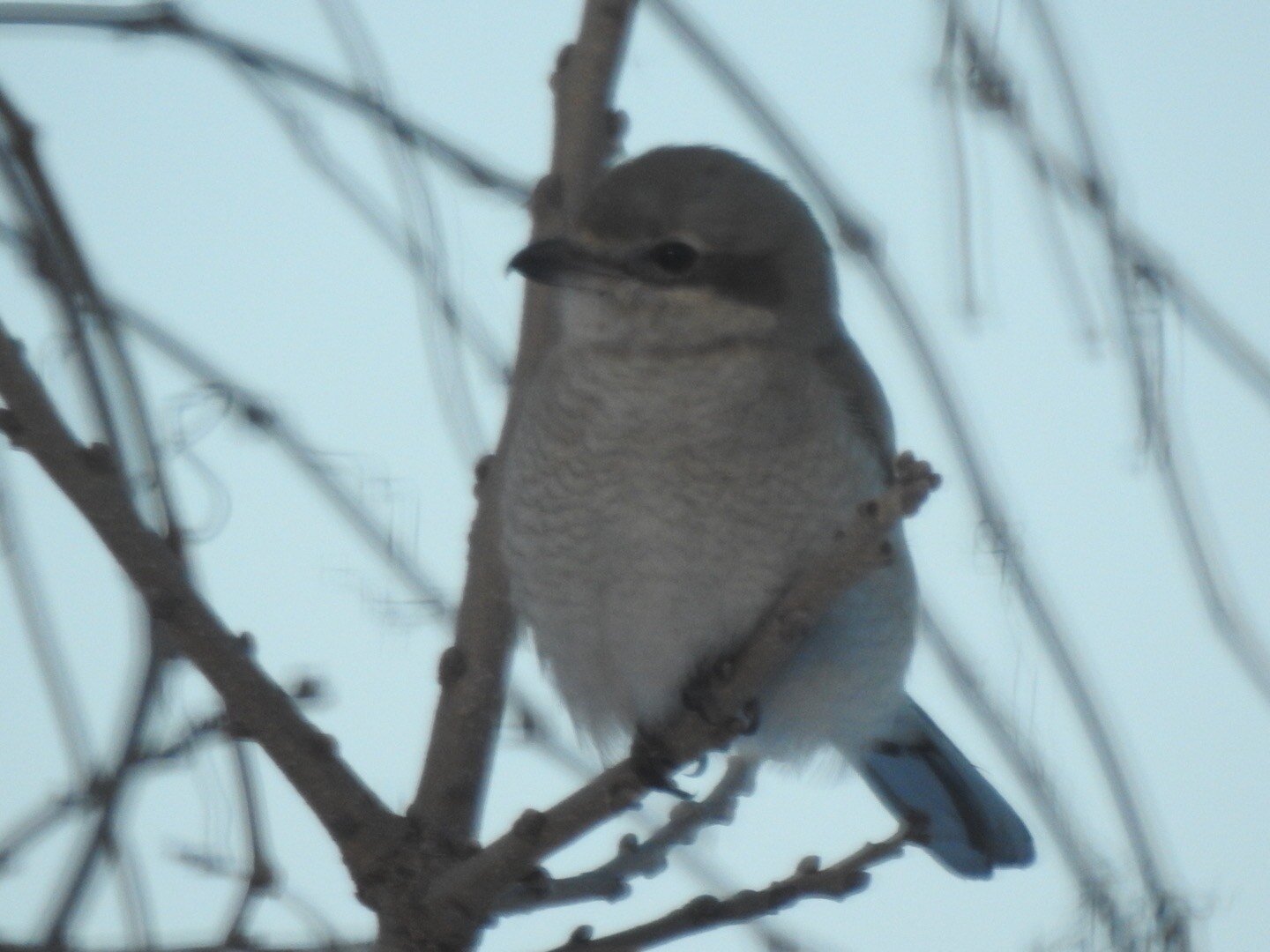One of the most striking birds of winter resides on the shrubby grasslands and savannas of southern Wisconsin. In this habitat, you can find wild plum, hawthorn, black locust, or barbed wire. The common link is spikes, thorns, or barbs. In winter in Wisconsin, if you search these spiny spots, the unsettling link might be impaled microtine voles. The uninitiated might look to the sky, wondering if a hawk dropped its prey randomly onto a plum bush. The answer comes from the sky, though not from a raptor species dropping the vole. Instead, you are on the wintering range of the northern shrike, a passerine, or songbird, (the only passerine in Wisconsin to regularly eat vertebrates) which actively stuck the vole in its place. The purpose of this act is to consume prey efficiently over the course of the winter. At any point, a northern shrike will cache, or save, up to seven prey items.
An impaled vole is cached for a northern shrike’s next meal. Photo by Drew Harry
Impaled voles, mice, and other small mammals are common indicators that you are on shrike territory, which can range from 500-1,000 acres over winter. Another interesting prey item are species of its own order—songbirds! Shrikes will consume birds like horned larks, dark-eyed juncos, house sparrows, American robins, red-winged blackbirds, pine grosbeaks, and red crossbills. Many of these birds are much bigger or quicker than the shrike, and thus shrikes will take other birds in surprise attacks. In a twisted move, shrikes will even mimic the calls of other songbirds to lure them into area where they ambush an unsuspecting sparrow.
In February, I often start getting concerned about the house sparrows looming around bluebird boxes around my house, although this year they have been noticeably absent. The reason might be a shrike that I’ve spotted a few times around the house. Shrikes typically sit for 1-2 minutes on the tops of trees, perched, and waiting to strike. A week ago, I was able to get some decent pictures through my window of an immature northern shrike as it moved from bur oak tree to pear tree and again back to the bur oak trees scattered about the yard; each time sitting for 1-2 minutes and allowing me to capture a few shots.
A northern shrike is spotted at the top of this oak tree at Faville Grove Sanctuary. Photo by Drew Harry
A northern shrike scouts the landscape to make its next move. Photo by Drew Harry
A northern shrike sits perched on the tip-top of a tree, giving nearby humans a minute to get a good look. Photo by Drew Harry
The immature shrike shows gray barring on its chest, a white eye-ring, and like adult shrikes has a light underside with a blue-gray top and a narrow black mask across its eye. The hooked bill is also diagnostic.
Barring, eye ring, and mask are all visible in this shot of a northern shrike. Photo by Drew Harry
For me, the most fascinating part about the northern shrike is its winter diet. While impaled small mammals steal the show, over 60% of an individual bird’s winter diet is composed of arthropods. A study in Idaho analyzed the regurgitated pellets of northern shrikes and found an average of 2.8 prey items per pellet. Overall, 33 species were identified in pellets for a wide and diverse sampling of food. To follow a shrike in winter is to understand the surprising breadth of prey items active through winter.
You might ask, aren’t arthropods dormant during winter? For the most part, yes. However, many species will stay active, and on slightly warmer days the south-facing slopes, rock outcrops, or other exposed areas can heat more quickly than other areas and cause some invertebrates to become active. In southwestern Idaho, rimrock areas are preferred by shrikes presumably due to the higher arthropod activity on these exposed rock areas.
Faville Grove has exposed rock—1.8 billion year old quartzite—perhaps a source of arthropods for the local shrike? Each winter we often see a shrike in the western part of the Sanctuary, hanging out in the tops of tamarack trees in the Diedrich-Alexander Wildlife Area along North Shore Road. You might find a shrike anywhere within Faville Grove Sanctuary, but your best bet is to keep looking at the tops of trees, or look for indirect evidence on spiny trees and bushes.
Written by Drew Harry, Faville Grove Sanctuary land steward
Cover photo by Eric Ellingson










